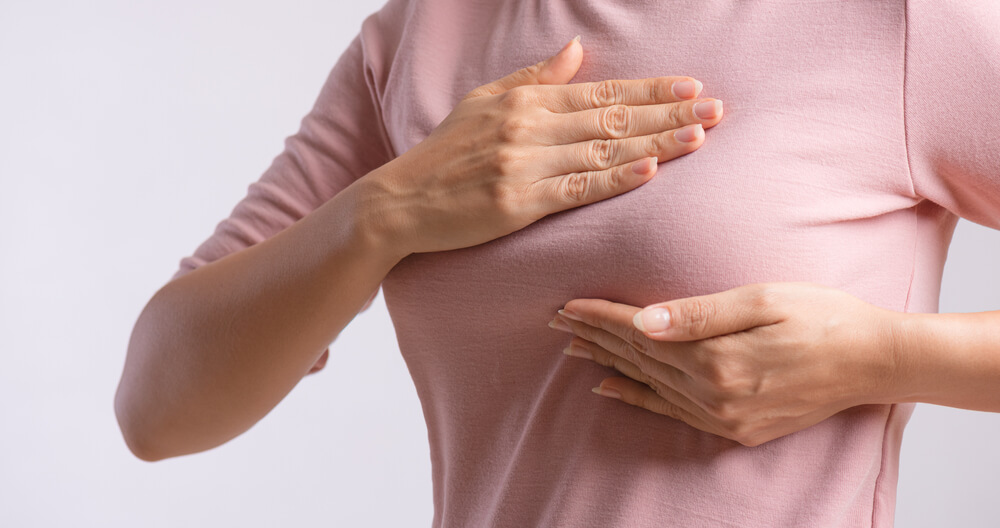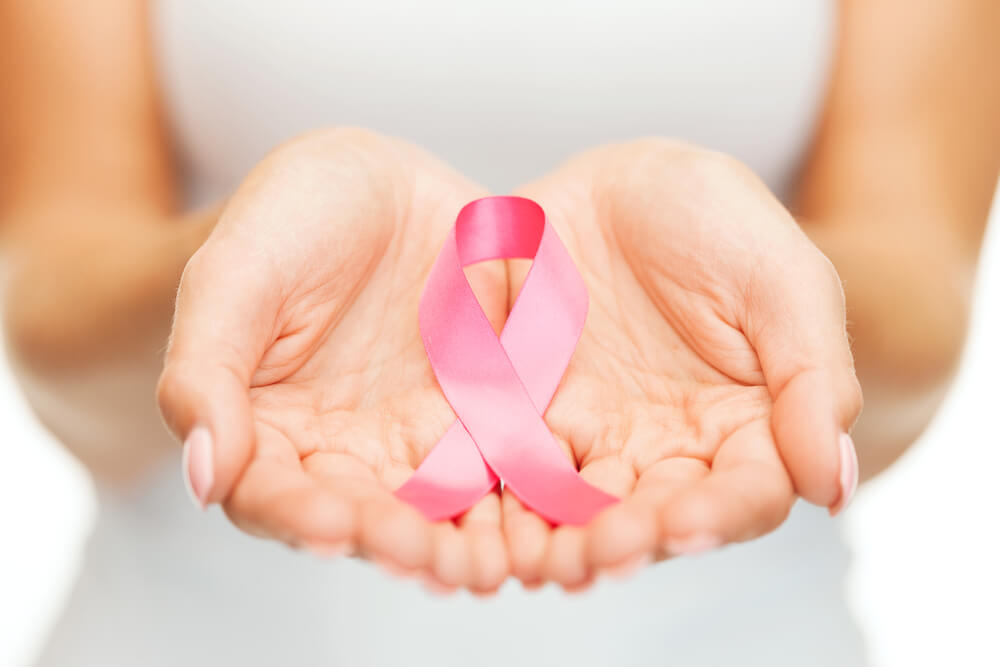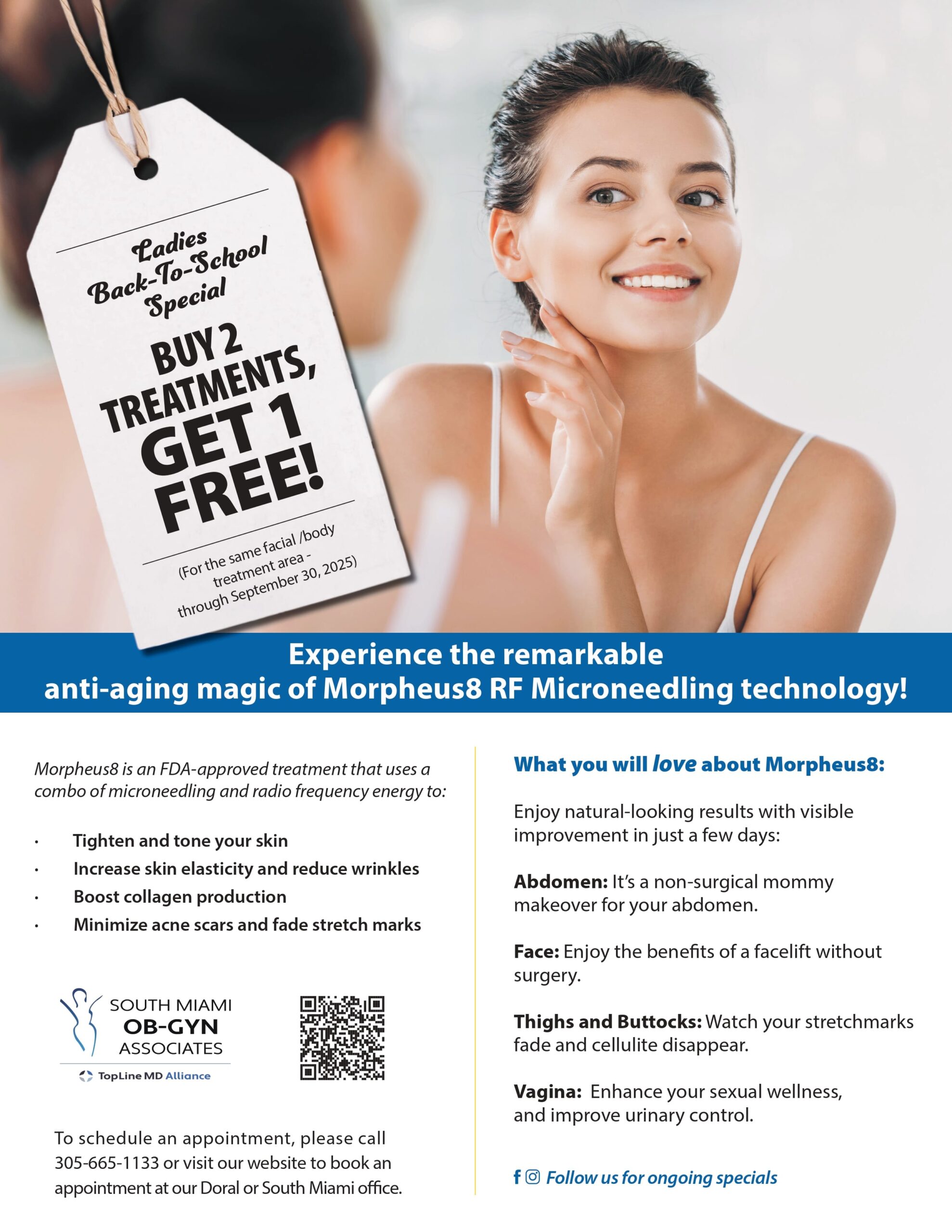October is Breast Cancer Awareness Month. Established in October 1985 as a partnership between the American Cancer Society and Imperial Chemical Industries, Breast Cancer Awareness Month is a unique opportunity to promote ways to share the facts and dispel the myths of breast cancer.
At South Miami OB-GYN Associates, a clinical breast exam is part of the annual GYN check-up. While most often patients discover a lump on their own while bathing and dressing, it is helpful for your GYN to establish a baseline for future reference.
By doing self-exams, scheduling your annual GYN exam, becoming familiar with how your breasts usually look and feel and scheduling an annual mammogram or breast MRI as recommended by your GYN, you can increase the chance of early detection and better prognosis.
Click HERE to schedule your annual exam today.
Understanding Breast Cancer
Breast cancer is cancer that forms in the breasts. According to the CDC, breast cancer is the second most common form of cancer, affecting about 264,000 women annually. Breast cancer most commonly affects women over the age of 50. While there is no cure for breast cancer, understanding the facts about what causes breast cancer and breast cancer symptoms and receiving routine mammograms with your OBGYN can help detect cancer early and improve your prognosis.
Common breast cancer symptoms include:
- Pain in and around the breasts.
- New lump(s) in the breast or underarm areas.
- Changes in breast shape or size.
- Unusual discharge from the nipples, including blood.

Five Lesser-Known Facts About Breast Cancer
As common as it is, there are still some breast cancer myths. Here are five facts about breast cancer you may or may not know.
1. Maintaining a Healthy Weight Reduces the Risk
Managing your weight and nutrition can positively affect many areas, including disease prevention. When you are healthy, your body is under less stress and is, therefore, better able to fight infection and maintain optimal health. Being overweight, in contrast, can slow your body’s response and strength, causing vulnerabilities to longer-term illnesses.
2. Age and Gender are the Greatest Risk Factors for Breast Cancer
While genetics play a role and inheriting genetic mutations can put you at a higher risk, the greatest risk factors are being a female and over the age of 50.
Other risk factors for breast cancer include:
- Dense breasts which make it more difficult to see a tumor on the mammogram
- Previous radiation treatment before the age of 30
- Exposure to DES, a drug given to women to prevent miscarriage
- Taking Hormone Replacement Therapy that includes estrogen and progesterone for more than 5 years
- Having your first baby after the age of 30 or not breastfeeding
3. Men Can Get Breast Cancer, Too
While breast cancer primarily affects women, the CDC reports that about 1 out of every 100 cases affects men. According to the CDC, the most common breast cancer symptoms men should watch for include:
- Discharge from the nipples
- Lump or swelling in the breast
- If the nipple appears to be pulling in
- Pain in the nipple area
4. Lumps Aren’t the Only Breast Cancer Symptoms
If an unusual lump has formed, that means cancer, right?
Well, not always. In fact, only a small percentage of lumps are cancer, according to the National Breast Cancer Foundation. When cancer is in its earliest stages, there are usually no visible physical symptoms. Waiting until you might see a lump may actually be waiting too long. Instead, the MD Anderson Cancer Center suggests watching for some of these earlier indicators:
- Swelling in or around your breast
- Warmth or itching around your breast
- Skin thickening and redness around the breast
- Pain in the breast that lasts more than three weeks
5. Drinking Alcohol Can Increase Your Risk
The link between alcohol consumption and cancer is perhaps one of the least commonly recognized. The American Institute for Cancer Research states that drinking alcohol is the third leading modifiable factor that can increase the risk of cancer. The CDC further explains that drinking alcohol actually increases your risk of getting six different kinds of cancer including:
- Mouth and throat
- Esophagus
- Liver
- Colon and rectum
- Breast
- Voicebox
When consumed, your body breaks alcohol down into a chemical called acetaldehyde. This chemical damages your DNA, which is vital to controlling regular cellular function and growth. Not only does the alcohol-causing chemical acetaldehyde disrupt this process, but it also prevents your body from repairing the damage. This irreparable destruction of the DNA process can then cultivate an environment ideal for a cell to grow out of control and become cancerous.
To thwart the harmful and potentially cancerous effects of consuming alcohol, the 2020-2025 Dietary Guidelines for Americans make specific recommendations. The guidelines suggest women consume no more than one drink per day. For men, the limit is no more than two drinks per day.
How to Dispel Breast Cancer Myths
Getting clear on the facts about breast cancer is just the first step towards awareness and prevention. One of the best ways to promote the facts about breast cancer is to get involved with Breast Cancer Awareness Month. Breast Cancer Awareness Month is led by the National Breast Cancer Foundation each October with the mission of raising awareness to all about the impact of breast cancer.
Ways to get involved with Breast Cancer Awareness Month:
- Donate $150 so a woman in need can get a mammogram.
- Have your company partner with NBCF to make a greater impact.
- Gather your friends and family to start a fundraiser for those battling breast cancer.

The Importance of Mammograms
Routine mammograms are one of the best ways to monitor your risk for breast cancer. For women over 40, it is recommended to have a mammogram every 1-2 years. For women under 40, your OBGYN will advise how often or if to have a mammogram based on your level of risk. Contrary to a popular breast cancer myth, breast compression does not cause cancer or spread it.
Mammogram x-rays are important because they allow your OBGYN to see any abnormalities in the breast tissue, including lumps, before they become visible. If a lump or abnormality is seen, your OBGYN can schedule further testing to determine the cause, which may or may not be cancer. For more detailed information on mammograms, you can request the NBCF’s free copy of Mammogram 101 on their website.
At South Miami OB-GYN Associates, we have seen firsthand the benefits of our patients returning each year for their regular health screenings. We look forward to scheduling an appointment for you with one of our well-trained gynecologists in Miami, Florida, or Downtown Doral, and provide you with the most up-to-date information on breast cancer and other women’s health issues.
Schedule your women’s health screening and get your prescription for a mammogram in South Florida today online or by calling 305.665.1133.




